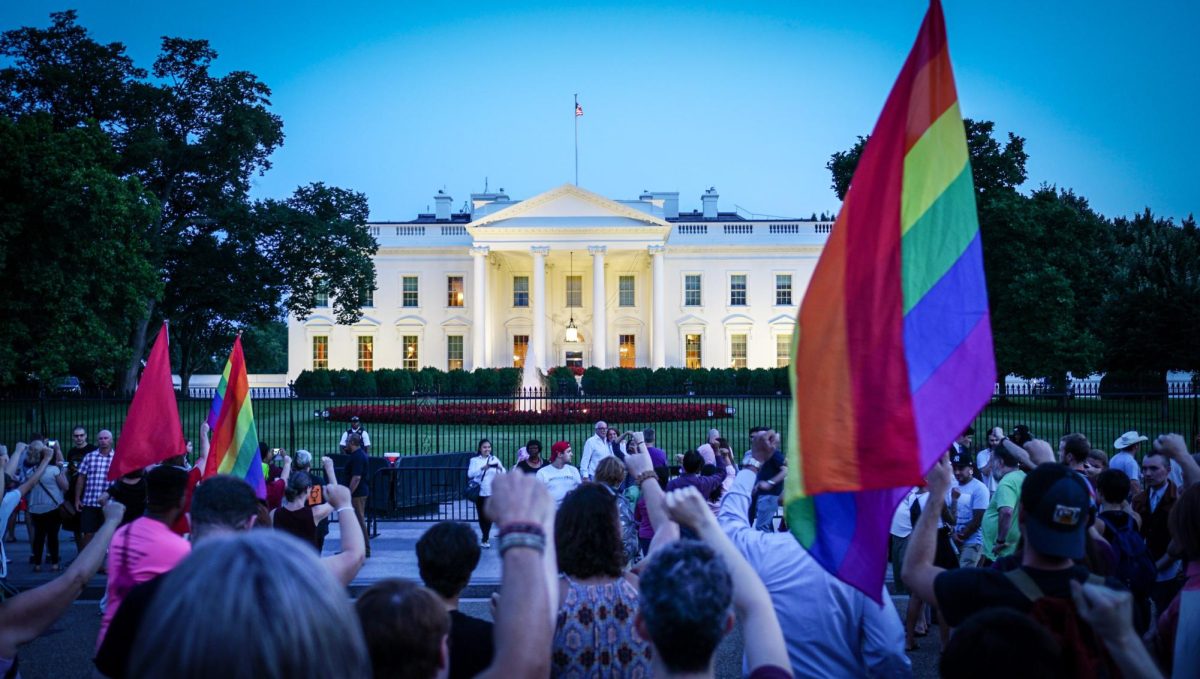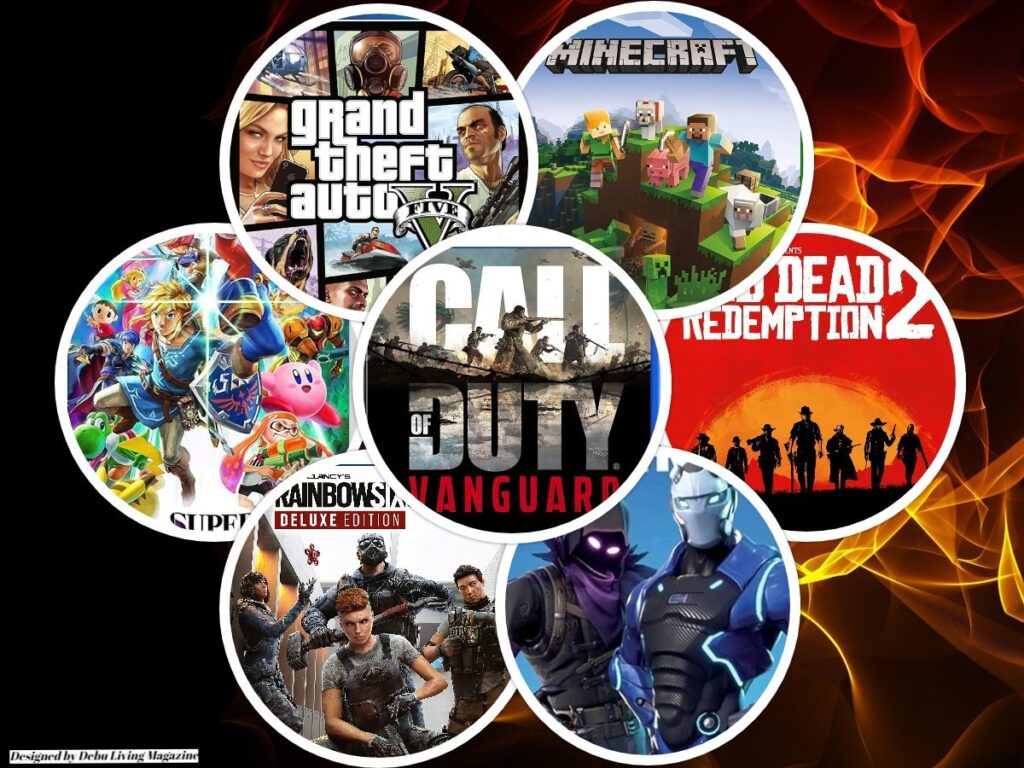“[Protecting] the children is a key issue, [but] please remember that we are children too and need the same protection.” ~Atlas
This is a quote from an acquaintance of mine who’s a fellow Huntingtown High School student and resident of Calvert County. They’re also a wonderful person who I had the pleasure of meeting and conversing with this year. I think the particular quote above highlights something a lot of people don’t consider regarding the trans community and their youth. They’re not “freaks of nature” or “abominations” they’re kids and people just like you and me. But I’m getting ahead of myself now, we need to start at the very basics of this all as it can be confusing at times.
So, who or what are trans people? Trans or transgender – both meaning the same thing – people are individuals who feel that they don’t truly align with their gender assigned at birth. This label is used as an umbrella term that pertains to transgender people, and some non-binary – individuals who feel that they don’t fall at either end of the spectrum of gender – people if they feel that it applies to them, but that’s on a person-to-person basis and should not be assumed.
And who or what are not trans people? Trans people are not inherently drag kings/queens/performers or crossdressers; the three groups may overlap at times but do not fundamentally mean the same thing. Drag performers are artists who make the act of expressing gender in theatrical ways as a sort of commentary on gender norms. It’s a performance and being trans is not. Being trans/transgender is a gender identity – a person’s individual sense of their gender. Crossdressers are simply people who dress in a way that’s typical of the opposite sex. (And side note, my use of the word “opposite” in this instance does not mean there are only two genders; just because purple is the opposite of orange doesn’t mean that red doesn’t exist.)
 Another distinction we need to make before all else is the difference between the terms “sex” and “gender” as they are often confused to mean the same thing. I feel that the Canadian Institutes of Health Research discerns the two perfectly. They define sex as the “set of biological attributes in humans and animals… [and] is primarily associated with physical and physiological features including chromosomes… and reproductive/sexual anatomy. Sex is usually categorized as female or male but there is variation in the biological attributes that comprise sex and how those attributes are expressed.” Whereas “[gender] refers to the socially constructed roles, behaviors, expressions, and identities of … people. Gender identity is not confined to a binary (girl/woman, boy/man) nor is it static; it exists along a continuum and can change over time.” This may seem like a lot of information and buzzwords but in layman’s terms, sex is one’s physical/physiological characteristics and gender is a person’s behavior, expression, and identity; and both are notbinary in any terms. Each person views their gender in unique ways different from anyone else. Sex specifically is most commonly misunderstood to be one or the other, male or female, but that’s simply not true; and science proves it. In case you weren’t aware, there’s a group of people whose sex does not exactly align with the basic guidelines of male or female. This group is called “intersex” and they exist across a wide spectrum, further disproving the whole “sex is binary” belief, and solidifying the fact that sex too exists across a spectrum.
Another distinction we need to make before all else is the difference between the terms “sex” and “gender” as they are often confused to mean the same thing. I feel that the Canadian Institutes of Health Research discerns the two perfectly. They define sex as the “set of biological attributes in humans and animals… [and] is primarily associated with physical and physiological features including chromosomes… and reproductive/sexual anatomy. Sex is usually categorized as female or male but there is variation in the biological attributes that comprise sex and how those attributes are expressed.” Whereas “[gender] refers to the socially constructed roles, behaviors, expressions, and identities of … people. Gender identity is not confined to a binary (girl/woman, boy/man) nor is it static; it exists along a continuum and can change over time.” This may seem like a lot of information and buzzwords but in layman’s terms, sex is one’s physical/physiological characteristics and gender is a person’s behavior, expression, and identity; and both are notbinary in any terms. Each person views their gender in unique ways different from anyone else. Sex specifically is most commonly misunderstood to be one or the other, male or female, but that’s simply not true; and science proves it. In case you weren’t aware, there’s a group of people whose sex does not exactly align with the basic guidelines of male or female. This group is called “intersex” and they exist across a wide spectrum, further disproving the whole “sex is binary” belief, and solidifying the fact that sex too exists across a spectrum.
Another thing we need to establish is that being trans isn’t some “trend” or phase that started recently. Transgender people have existed for millennia, with their first traces being recorded back between 200 to 300 B.C. These people were Galli priests in ancient Greece who dressed femininely and identified as women. And this doesn’t even begin to cover the topic of third-gender people that exist in countless indigenous and native communities across the globe. Needless to say, it should be acknowledged that trans people are not a new “thing” or “trend” that solely exists to enable mentally ill people as some people tend to believe.

Now that we’ve gotten through the fundamentals, let’s get into the meat of things. You may have preconceived notions against trans people, and if you’ve read up to this point you likely do not – but I digress, so if you do, I ask that you ignore those beliefs and consider this with an open mind. We all want, I hope, for the safety and happiness of the people or loved ones around them. As the renowned music artist and businessman Jimmy Dean once said, “I can’t change the direction of the wind, but I can adjust my sails to always reach my destination.” We normally can’t change the things around us to achieve our goals, but we can alter our behavior and actions so that we can achieve them.
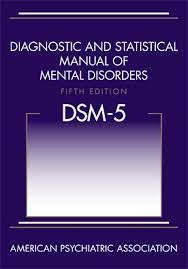
Trans people face discrimination and transphobia on a day-to-day basis. This doesn’t even begin to cover the horror that is gender dysphoria. Gender dysphoria is defined by the DSM-5 (Diagnostic and Statistical Manual of Mental Disorders), the guide used by medical professionals for the diagnosis of mental disorders, as the “psychological distress that results from an incongruence between one’s sex assigned at birth and one’s gender identity.” The most common manifestation of gender dysphoria is feeling uncomfortable in one’s skin due to it not lining up with their gender identity. Can you even imagine how that would feel? Everyone goes through physically uncomfortable times, whether it be wearing something uncomfortable or being in an uncomfortable situation. We all know the feeling. But to feel that way due to your own body; I don’t want to imagine how that would feel and it’s horrible that anyone has to feel that way at all.
Transgender people have to face their own internal struggles, which of course would weigh an unfathomable amount on them,
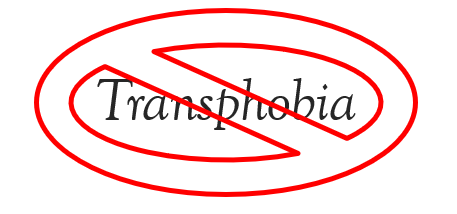
and then they have to deal with external struggles like getting misgendered – an instance where someone uses the wrong pronouns/gender for the person regardless of intention – or deadnamed – when someone uses their birth name that is not their chosen name, this is also regardless of intention – too. Even at home, a place that is supposed to be a safe place, trans people face transgressions from their family members, the people who are supposed to love and care for them.
I spoke to another friend, Robby, who’s trans, about this and his experience with his family. He described how he’d been outed – the act of forcing someone to come out against their will – by a school counselor to his parents and their reactions to the information. “Coming out to friends [and school] have been … great, … family has been harder.” Another friend, Daniel, explained his experience also regarding his family and how they reacted to him coming out. He detailed various things his mother had said, “Where did I go wrong?” Or she incorrectly attributed his gender identity to his “friends/the internet” as if it were a choice.
Your gender identity is not a choice, nor is your sexuality. If someone comes out to you, trust them, even if they come out later in life with a different identity, that’s okay. People are always evolving and growing, the human brain isn’t even developed at the age of 25, and most people are still getting their lives together even after that age. So, what’s the rush? Why is there this double standard/expectation for trans/lgbtqia+ people to know exactly who they are from the get-go?
On a more positive note at least, I wanted to share some advice the aforementioned people have given. All three, Robby, Atlas, and Daniel, were asked the same three questions on what they would say to certain groups. The first of the groups were the trans allies of the world, the three of them gave a very appreciative answer of “Thank you” and “Please listen and keep fighting for us.”
The second of these groups was the transphobic people of the world, and I feel that Atlas’ response described their sentiments. He referenced the quote you see above “[Protecting] the children is a key issue, [but] please remember that we are children too and need the same protection.” It sounds like such an obvious statement, right? These are just people and children, and they deserve as much respect and protection as everyone else gets, regardless of how they identify.
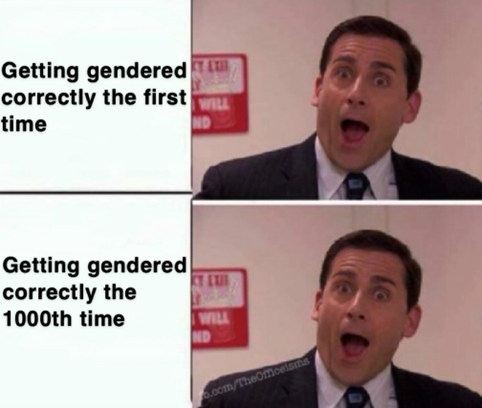
The last message is directed towards the trans youth of the world. Robby advises to “find your people” as having a support group can be vital to one’s mental health/wellness. Daniel further stated something I found particularly powerful and one of the final notes I’d like to end on today. “[There] is a good ending to your journey and you deserve to be there to witness it… [So] hang in there.” Things will be tough for a while, and you’ll want to give up sometimes, but please just hang in there. And finally, just as Atlas said, “Even when you feel like [you’re] alone, you aren’t. There is always a bug or person around waiting to help … you out.”
References:
- https://cihr-irsc.gc.ca/e/48642.html
- https://www.plannedparenthood.org/blog/is-drag-the-same-as-transgender
- https://www.hrc.org/resources/seven-things-about-transgender-people-that-you-didnt-know
- https://www.psychiatry.org/patients-families/gender-dysphoria/what-is-gender-dysphoria
- https://www.ncbi.nlm.nih.gov/pmc/articles/PMC3621648/#:~:text=The%20development%20and%20maturation%20of%20the%20prefrontal%20cortex%20occurs%20primarily,helps%20accomplish%20executive%20brain%20functions.
- Interviews from Atlas, Robby, and Daniel Gonzalez

